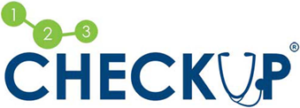What is The Normal Oxygen Level?
Blood oxygen level is the amount of oxygen circulating in the blood. Your blood oxygen level measures how much oxygen is circulating with your red blood cells. The body closely monitors blood oxygen levels to keep them within a specific range, so that there is enough oxygen for the needs of every cell in the body. A person’s blood oxygen level is an indicator of how well the body distributes oxygen from the lungs to the cells, and it can be important for people’s health.
What should oxygen levels be?
Normal arterial oxygen pressure (PaO2) measured using the arterial blood gas (ABG) test is approximately 75 to 100 millimeters of mercury (75-100 mmHg). A blood oxygen level below 60 mm Hg is considered low and may require oxygen supplementation, depending on a doctor’s decision and the individual case.
Hypoxemia is diagnosed by physical examination and generally detected using ABG testing and is defined as blood oxygen levels above 120 mmHg.
When the level goes below 75 mmHg, the condition is generally termed hypoxemia. Levels under 60 mmHg are considered very low and indicate the need for supplemental oxygen. Supplemental oxygen is provided through an oxygen cylinder that is connected to the nose via a tube, with or without a mask.
Your blood oxygen level is measured as a percentage—95 to 100 percent is considered normal.
You should be check your blood oxygen if
- Chronic obstructive pulmonary disease (COPD)
- Pulmonary fibrosis
- Pulmonary hypertension
- Cystic fibrosis
- Asthma
- Congestive heart failure
Other conditions include:
- Anemia
- Sleep apnea (temporary cessation of breathing during sleep)
- Smoking
How is the blood oxygen level measured?
The most efficient way to monitor blood oxygen levels is by an arterial blood gas or ABG test. For this test, a blood sample is taken from an artery, usually in the wrist. This procedure is very accurate, but it can be a little painful. Another fast and easy way is by the use of a pulse oximeter. It’s a small device that clips onto your fingertip. It shines a light into the tiny blood vessels in your finger and measures the oxygen from the light that’s reflected back.
When to see a doctor
- severe and sudden shortness of breath
- severe shortness of breath that get worse during exercise or physical activity
- shortness of breath even when at rest
- wake suddenly with shortness of breath or a feeling of choking
Disclaimer
The information, including but not limited to, text, graphics, images and other material contained on this website are for informational purposes only. The purpose of this website is to promote broad consumer understanding and knowledge of various health topics. It is not intended to be a substitute for professional medical advice, diagnosis, or treatment. Always seek the advice of your physician or another qualified healthcare provider with any questions you may have regarding a medical condition or treatment and before undertaking a new health care regimen, and never disregard professional medical advice or delay in seeking it because of something you have read on this website.
References:
https://www.medicalnewstoday.com/articles/321044
https://www.medicinenet.com/what_are_blood_oxygen_levels/article.htm
https://www.bannerhealth.com/healthcareblog/teach-me/blood-oxygen-level-what-you-need-to-know


